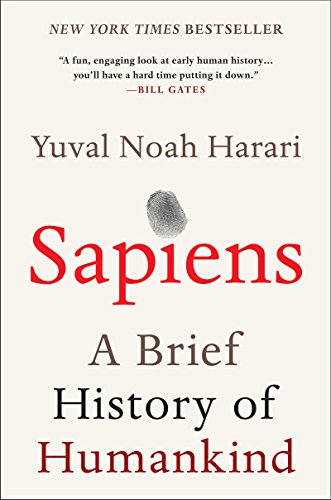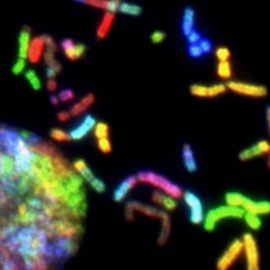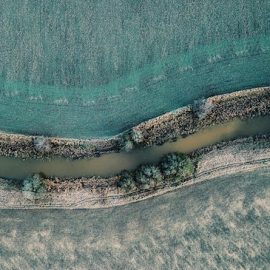

This article is an excerpt from the Shortform summary of "Sapiens: A Brief History of Humankind" by Yuval Noah Harari. Shortform has the world's best summaries of books you should be reading.
Like this article? Sign up for a free trial here .
We think of our own species as the only humans, distinguished from and superior to every other species on earth. But when we, Homo sapiens, arrived on the scene 2.5 million years ago, we weren’t anything special. We existed in the middle of the food chain, as often prey as we were predators, and we weren’t even the only humans. Why did Homo Sapiens survive while other human species disappeared?
Homo Sapiens survived due to their advanced linguistic abilities and communication skills. The way Homo Sapiens used language affected their ability to hunt, trade, and dominate the animal kingdom.
We’ll cover why language was so important to the survival of Homo Sapiens and why the other human species died out.
Why Did Homo Sapiens Survive?
Before we can understand why Homo sapiens survived, let’s look at who they were competing against.
Multiple Human Species
Humans evolved in East Africa from a genus of apes. These early humans settled all over the world, and as the climates and conditions differed from place to place, they acquired different traits and became different species.
We tend to think of the evolution of humans as a linear progression from Homo erectus to Neanderthals to Homo sapiens, but at least six human species were alive when our own lived on earth, and others may yet be discovered. The known human species included Homo soloensis, Homo floresiensis, Homo denisova, Homo rudolfensis, Homo erectus, and Homo ergaster. The two that will play the biggest role in answering the question, Why did Homo Sapiens survive? are:
1. Homo neanderthalensis (“Man from the Neander Valley”): Also known as Neanderthals, these humans lived in western Asia and Europe. They were more muscular than we were and they had bigger brains than we did (or do today). We’ll see why the Neanderthal species died out, even though Neanderthals were superior to Sapiens in many ways.
2. Homo sapiens (“Wise Man”): Us. Our species of man also evolved in East Africa.
Throughout, the term “Sapiens” refers to our own species while the term “human” refers to all the members of the Homo genus.
Last Man Standing
Why did Homo sapiens survive? We shared much in common with our fellow humans. How did we rise from the middle of the food chain to the top? And how did we become the last humans standing?
Fire
The domestication of fire changed the game, giving humans power over the natural world that no other animal possessed. Fire was a source of light. It was warmth in the cold months and a weapon in moments of conflict. You could even use fire to burn through impassable underbrush, changing the landscape to fit your needs.
The most important use of fire was cooking. Cooking food made it easier to digest. Since digestion was easier, the long intestine became shorter. This development was especially important. Big brains and big intestines both use a lot of energy. By allowing humans to better digest food and evolve shortened intestines, fire may have indirectly contributed to the brain getting a greater share of the body’s energy. As the brain got more energy, it got bigger.
When humans mastered fire, they finally gained a key to developing dominance over animals that were stronger and faster than they were.
Why Are We the Only Humans Left?
Sapiens wasn’t the only species that used fire. Why did it come to dominate? Why did Homo sapiens survive while others perished?
Early theories answering the question Why did Homo sapiens survive? suggested that either A) Sapiens bred with other humans, merging the various human species, or that B) Sapiens were too genetically different from other species to procreate with them, meaning that all humans currently alive are pure sapiens.
Both of these theories are flawed. For years, Theory B had more archeological evidence to support it. But then the results of a 2010 project to map the Neanderthal genome showed that 1-4% of Middle Eastern and European DNA is Neanderthal DNA. A few months later, results from an analysis of the DNA of newly-discovered Denisova showed that 6% of Melanesian and Aboriginal Australian DNA is Denisovan DNA. These results are still new and need to be confirmed. Even if they are confirmed, they don’t suggest a “merger” of genes as in Theory A—such small percentages hardly suggest that two species of humans “merged.” What they do suggest is that a small amount of interbreeding happened, enough that we still harbor the DNA of another species, but it was rare.
The current evidence leaves us with two options to explain the disappearance of other humans and answer the question Why did Homo sapiens survive?:
- Option #1: Due to their superior tools and collaboration skills, Sapiens were better hunters and gatherers, and as they migrated to new geographic areas, they out-competed the human species that originally called that area home. Neanderthals, who were less resourceful, had trouble feeding themselves, and they slowly died out.
- Option #2: Genocide. Modern Sapiens have fought wars with others because of their differences in skin color, culture, and religious beliefs. Would Sapiens be any more tolerant of humans of an entirely different species? Or maybe it was their familiarity that motivated Sapiens to kill their fellow humans. Perhaps other humans, particularly the Neanderthals, were too similar to Sapiens. Neanderthals were a threat to a species that wanted to dominate the animal kingdom.
What made Sapiens the superior species that pushed other humans to extinction? Harari argues the most likely answer is language. We’ll cover that next.
Language Allowed Sapiens to Out-compete the Neanderthals
The Neanderthals were perhaps the human species, other than Sapiens, most likely to survive. As we’ve learned, they had strong bodies and large brains and were superior to Sapiens in both these qualities.
But in the struggle for dominance and, ultimately, survival, they were no match for Sapiens. The Cognitive Revolution, and the language, fictions, and cooperative skills that came with it, gave Sapiens a leg up in trade and hunting.
Trade
Archeologists find shells from distant coasts in Sapiens settlements, showing that Sapiens must have traveled far and been good navigators. Both navigation and interaction with strangers necessitates good communication skills, cooperation, and shared myths. For instance, you need to be able to trust strangers to trade with them. Foreign Sapiens traders probably engendered this trust by calling upon a shared mythical ancestor or god. They probably also used the trust that comes from believing in the same myths to trade information, widening their network of knowledge.
There’s no evidence that Neanderthals traded. They made their tools from local materials. In fact, no other animals trade. Sapiens had a huge advantage here.
Hunting
While Neanderthals hunted by themselves or in small family groups, Sapiens hunted in large, cooperative groups. Because there were so many of them, and they knew how to communicate effectively, Sapiens could surround an entire herd of wild horses, chase them into a tight spot where they were trapped, and slaughter them.
If Neanderthals and Sapiens were living in the same area and competing for the same food sources, Sapiens usually won. This may answer the question: Why did Homo sapiens survive?
———End of Preview———

Like what you just read? Read the rest of the world's best summary of "Sapiens" at Shortform . Learn the book's critical concepts in 20 minutes or less .
Here's what you'll find in our full Sapiens summary :
- How Sapiens outlived and outlasted the 8+ other human-like species on Earth
- The 3 critical revolutions in human existence that led to our domination of the planet
- How much of what powers our world today is really just a shared mass delusion
- What the future of humanity might look like






